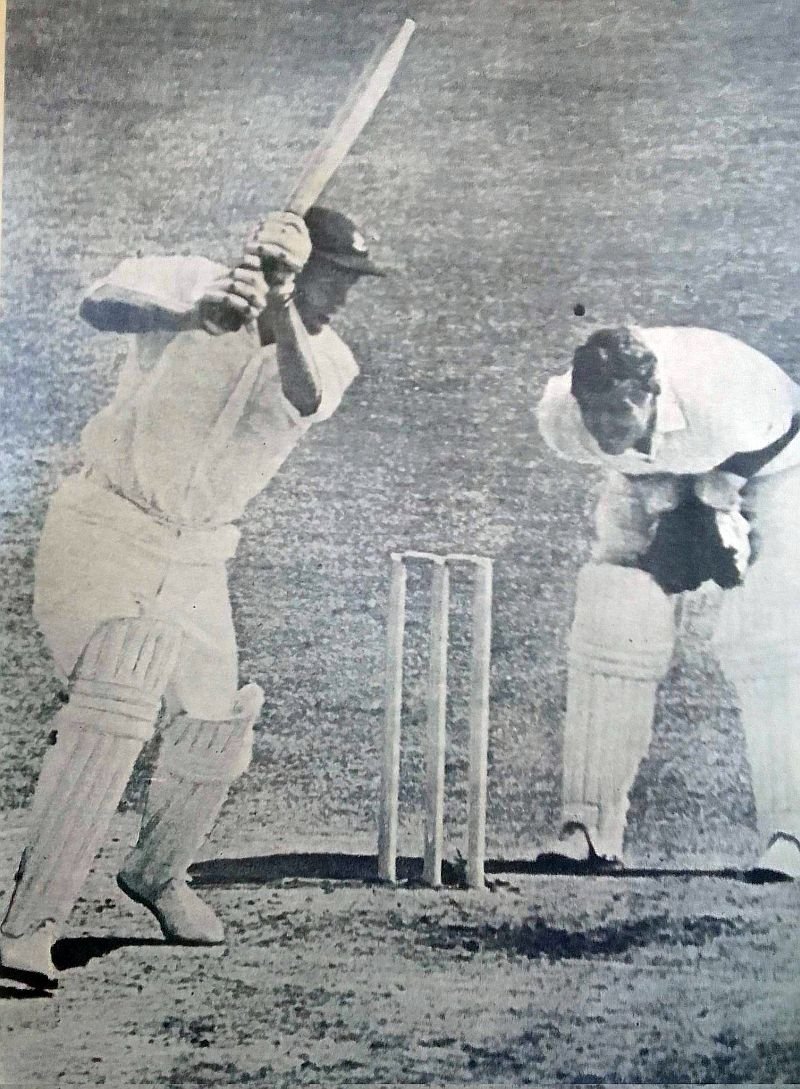Graeme Pollock can still play. That’s what one hears of great South Africa batsman.
A bit of an exaggeration maybe, but Pollock certainly has an unmatched fan following. There are stories aplenty of Pollock’s batting exploits. An interesting one concerned him and Jonty Rhodes, together at the wicket. Now Rhodes, as we all know, is a brilliant fielder. The memorable run out during the World Cup would remain etched in our memories for a long, long time. In one of the club games, Jonty Rhodes had Pollock on the run, scampering for quick singles and dashing back for the second. Graeme Pollock, even in his playing days, was not really fond of taking the ones and twos.
Pollock allowed Rhodes to indulge in his antics and then at the end of an over, just called him and said: “Kid. enough of athletics. Let’s play cricket now.” Yes, it was just cricket for the next hour or so us Pollock blasted the bowling with a flurry of fours and sixes.
There was another incident when the mid-wicket fielder twice chased the ball to stop Pollock’s drive. The non-striker, seeing the fielder sprinting, would look for the two Pollock didn’t like. He tapped the pitch as the non-striker walked up to him, probably wanting to suggest that they run the ones or twos in case the ball is stopped. “I know when I hit a boundary,” Pollock had to say. And then he showed how he hits the boundaries. In a flash, the ball would race to the fence. The mid-wicket was posted on the line and Pollock with contempt, kept beating the fielder on the fence. The bowlers later cursed the non-striker for instigating him.

Graeme Pollock and Eddie Barlow were involved in many big partnerships for South Africa and Transvaal. Barlow has this experience to share. With Pollock at the crease, there was little for the non-striker to do than just stand and admire the genius. And what did Barlow do? “Take off the gloves and rest on the bat’s handle.”
Pollock was good at taking the single, unfailingly, off the last ball of the over. So sick was Barlow once that he turned his back as the bowler took the bowling leap. Pollock got the message and Barlow saw a spectator reach to catch the ball far behind the sight- screen. That’s where Pollock had sent the ball soaring.
Eddie Barlow was believed that Graeme Pollock wasted his talent, despite the achievements. “He was thousands of runs more,” said worth Barlow.
In a home series against England, Pollock was dismissed regularly by Fred Titmus. Even if the score was 10 for 2, Fred Titmus would come on and remove him. “It was not the bowling. I just wasn’t playing well. I could have got out to any other bowler.” His reputation at stake, Pollock raised his game in his fourth innings of the series, got a 50, and went on to top the tour averages with a 60-plus. On the subsequent tour to England, he trained his attention on just one bowler, Titmus, and hammered him out of sight.
Old timers say that Graeme Pollock was a ferocious driver of the ball. The length did not matter as he would drive through the line. No fielder dare put his hand out to stop the ball. Some of his shots were so hard that fielders have known to have fractured their hands in trying to stop the ball.
In a club game once, a bowler so infuriated Pollock that he is said to have told Barry Richards, his partner at the crease, that he would get six boundaries in his next over. The first ball went sizzling to the fence. It was as if the ball was trying to escape the fury of the bat. The fifth was short and Pollock pulled it in front of his face. “It was an incredible shot; Richards is said to have admitted later.
Graeme Pollock was very strong off the backfoot. He could punch a ball rising chest high with ease. The man in the covers would just see a red blob flash past him. It was the same if he stood close to the boundary. Such was his power.
The best was yet to come. In desperation to avoid being clobbered off the last ball, the bowler aimed for the block hole. He was on target, but so was Pollock. Back he went and slammed it to point. Richards stood dumbfounded. The bowler stood devastated, his morale in the dumps.
Pollock was said to be very harsh on the young bowlers. “That’s the only way they will learn,” was his way of looking at it. He was right. When Pollock walked out as a 16- year-old in his first first-class match, the bowlers were spitting fire. And he met fire with fire stroking his way to a century.
Even after he retired, there was this urge to score more and more runs. There was this side of retired oldies called “Nomads. In six matches for Nomads, he hit six centuries. People would flock to the grounds just to see Pollock bat. Graeme Pollock retired in 1987. Had he been still playing, the Indians sure would have had many more anecdotes.
